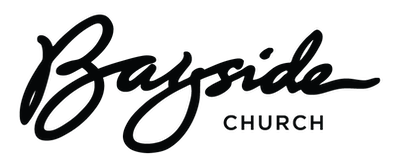Prayer. Along with reading the Bible, the most foundational of spiritual disciplines, regardless which denomination you roll with. I’ve known about prayer as long as I’ve known about anything. But it took thirty-one years, a chronic illness and two days in what amounts to rehab to realize its transformative power.
In a previous post, I shared at length about my battle with a chronic illness. Officially, I was diagnosed with Chronic Fatigue Syndrome. The symptoms are closely related. So is the treatment.
Holistic living.
If that seems too Buddhist or Tibetan for you, then use “self-management strategies” or “positive lifestyle changes.” Chronic illnesses, the ones most closely associated with my symptoms, at least, are incurable. Surgery or meds won’t fix the problem, in other words. The answer, instead, is to change your lifestyle in a way that allows you to manage your symptoms.
So, there I was, at the Mayo Clinic in Rochester, Minnesota (talk about places I never thought I would be), going through a two-day chronic pain management class. I’m not gonna lie, I was skeptical of the whole thing. But I decided to go through with it, probably because they already had my money.
As soon as we sat down, the instructors handed out a cute, colorful pie chart divided into fourteenths. Self-management Tools, they were called. I examined the pie and probably arrived at the same place as the other dozen people in the class: the Mayo Clinic might be the best hospital in the world and with some of the best doctors under the same umbrella, things like time management, exercise and sleep hygiene are the best you can do?
The instructors tread around the chart, discussing each tool. But they also made sure to hone in on a few of them, the tools that were most important. These Self-Management Tools were backed by research, you see. And the numbers were skewed in favor of some more than others.
Halfway through the class, we arrived at the most important tool. So important, in fact, that 85% of people who saw their symptoms decrease implemented it. The tool? Diaphragmatic breathing.
Dia… what?
Yeah, me too. Fortunately, underneath the name were a few words to help you understand it. The first word? Meditation. Then came the second, the one that rocked my world six ways from Sunday.
Prayer.
The Mayo Clinic isn’t a religious organization, per se. They see patients from sea to shining sea. So, they opt for more technical terms. I get it. Our instructors explained it this way.
“Some people prefer to call this prayer,” the instructors said, “but if you’re not religious, you can just call it meditation or focused breathing.”
Regardless what you call it, the point was crystal clear. If you want your life to improve, you MUST implement this strategy. Thirty minutes a day (or 10 minutes, 3 times a day), at a minimum.
I left for the airport an hour or so after class was over, still overwhelmed by it all. I don’t do heights, so as my big bird prepared for takeoff, I thought this a good time to try focused prayer.
I closed my eyes, calmed my mind, and prayed.
I’m not here to say focused prayer removed my symptoms. It didn’t. When I closed my eyes on that plane, however, something happened. I experienced God. I started to feel peace. I started to hope again. These things had been largely absent since all this began some four years ago.
Prayer for me always felt burdensome. I wasn’t good at it. My task-driven mind saw it as a waste. It became something I always did later (but, of course, later never came).
I knew all about the stories of Jesus and prayer. He spent nights in prayer (What do you talk about for that long?). At times, he skirted away from the crowds – people eager to hear his message and/or desperate for healing – to pray (Why would you choose prayer over healing?).
It was obviously important, prayer. I understood that. Prayer is conversation with God. Got that too. But not until I closed my eyes on the airplane did I ever experience it. Or, better said, experience Him.
And that’s what I want to share with you, friends. This post isn’t about Self-Management Tools, although every human could benefit from them, chronic illness or not.
This is about prayer.
Every Christian believes prayer to be central to the Christian life. We’re told of its importance as soon as we’re introduced to Jesus. But for thirty-one years, I didn’t get it.
Why does it matter so? Why is Jesus immersed in it? Why does the apostle Paul tell us to do it without ceasing? What have I overlooked?
Well, here are a few things.
Prayer is, first and foremost, an act of listening, not talking. Growing up, I was taught that prayer was a way to talk to God, to tell him about my day, to thank him for the good parts and ask him to improve the bad parts. Prayer was also an avenue to petition God for the healing of someone I love.
I’m not negating these approaches to prayer. I’m telling you it’s not how prayer starts. Prayer begins with listening, or being still as the Psalmist says. Without this, prayer is downgraded to transactional communication. And I suppose this is why I struggled with it. You can’t find intimacy with anyone when the language is primarily transactional.
I’m not used to listening. I’m supposed to be in charge of prayer. That’s what was modeled for me.
Can you imagine someone praying like this in front of the church, a prayer of silence and listening? It would take all of 15 seconds before every eye opened to make sure dude was still alive. This kind of thing isn’t normal, right? Yet, I ask why this isn’t the default approach to corporate prayer, or any prayer.
Back at the Mayo Clinic, our instructors, in describing focused breathing, told us to concentrate on one thing. Don’t talk or watch TV or in other words. So, on the airplane, for the first time, I focused on God for 10 minutes. No words, I just listened. And the longer I remained silent, the more peace and hope I felt.
Prayer is not transactional. It’s relational. And we must learn to listen to God before prayer will mean anything to us.
I learned something else about prayer in that moment.
Prayer begins with listening. But it eventually becomes a way of life. Prayer is divine attentiveness to the things of God in our everyday lives. It’s an increased awareness of God’s movement in the world. This explains why Paul tells us to “pray without ceasing.”
Within 10 minutes of listening to God on the airplane, he connected many dots from the past four years. Why did this chronic illness happen? Why would it not go away? I finally had peace about his timing, trust that he would redeem this illness and use it for good. Maybe even for this blog post, who knows?
When prayer becomes a way of life, nothing happens by chance. No moment stands alone. Everything is connected. Good, bad, nothing is wasted. Every circumstance is an opportunity to see God, a realization of his movement in the world.
Prayer, the transformative kind, can’t be hurried. Sure, “pop up prayers” (for lack of a better term) aren’t wrong. Neither is scheduling prayer. But to experience God and the Spirit’s fruits (love, joy, peace, etc.), prayer must become something our day revolves around rather than something crammed into an already busy schedule.
You can’t hurry prayer. You just can’t. And, again, this helps explain why prayer never made sense to me. In America, everything is built on speed. We’re an on-demand, right now culture. And while there’s nothing inherently wrong with this, it’s toxic when we try to impose these cultural values onto prayer.
One more thing Christians miss about prayer.
Prayer is intensely personal and extremely intimate. When it comes to intimacy, how you approach it with God is how you approach it with everything. If you struggle to find intimacy with God, it will impact intimacy with your spouse, your family and friends, and even your neighbor.
Prayer shapes your capacity for relational intimacy, in other words. It’s hard to be intimate with another divinely-created person when you’re not intimate with the divine Creator.
That’s one thing focused prayer has made clear. My chronic illness is still around, but I’ve continued to be still at least 30 minutes every day since returning home. In just a week or so, I feel more connected to my wife (maybe closer to her than any point in our 8 years of marriage). I’m also more grateful for my family and friends as well as more concerned about others.
Coincidence? Maybe. I believe, however, my increased intimacy with God is to blame.
So, it took thirty-one years, a chronic illness and a class on managing its incurable symptoms before I realized the power of prayer. But regardless of what lies in the days ahead, focused prayer will be part of my life. And regardless of whether or not you have a chronic illness, I hope it will be part of yours too.
Grace and peace, friends.


Jim Burney
Great article Frank.
Peps who struggle with prayer will find this information very useful.
Thank you for sharing.
Frank Powell
Thanks for the kind words Jim!
Renee
Thank you Frank! I too struggle with prayer and just can not figure out why.